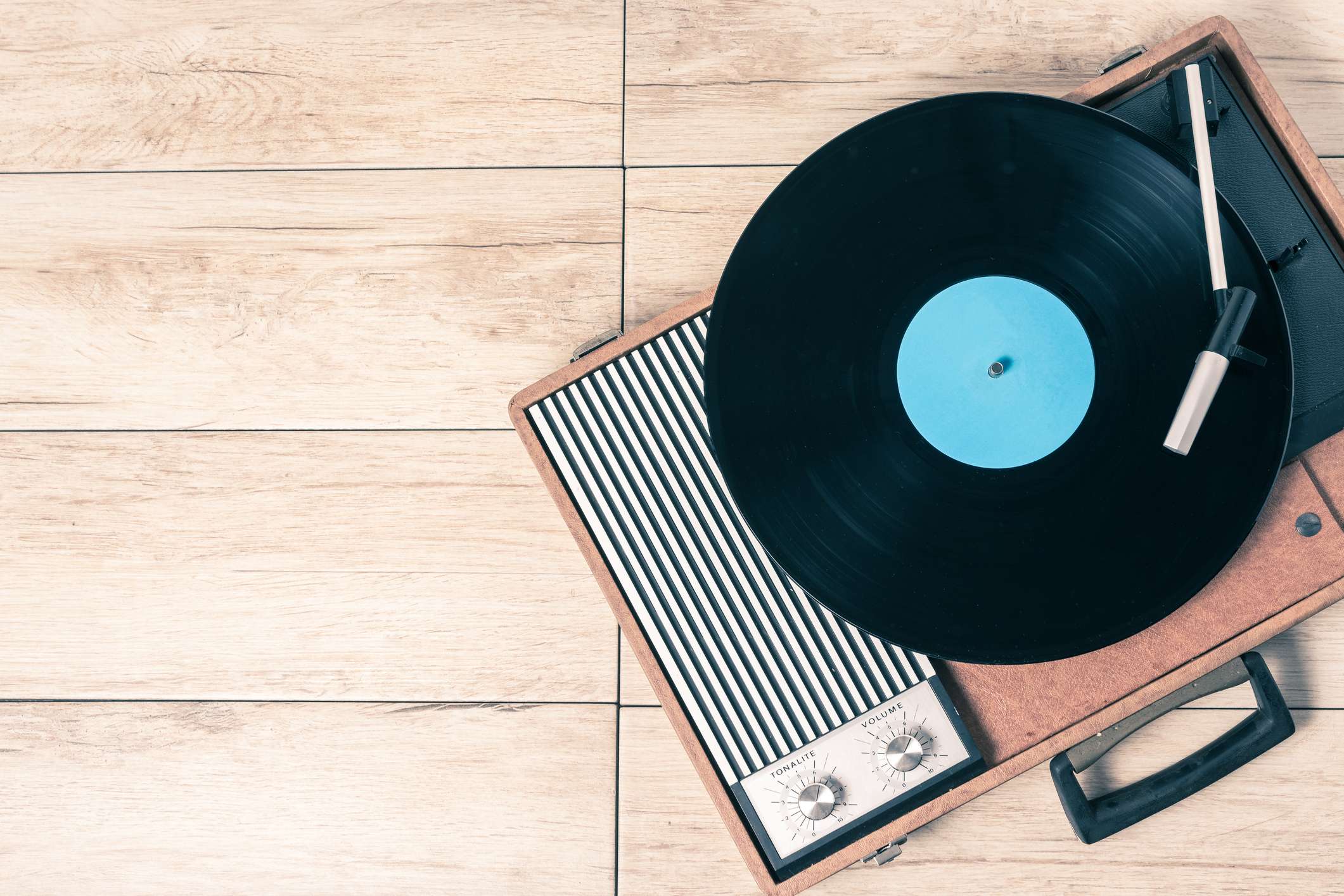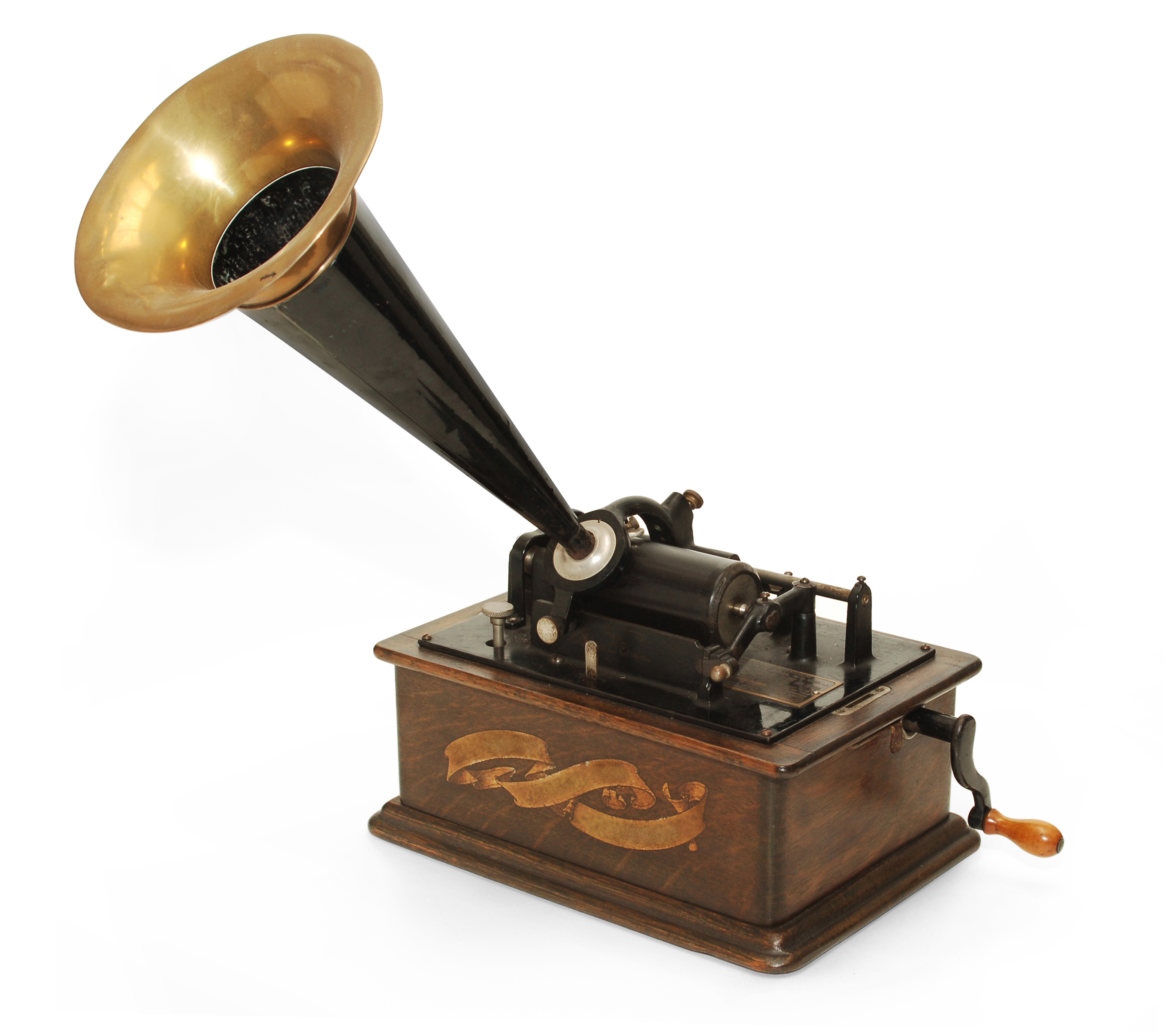Music has been central to human culture since the beginning of time. To understand how we listen to music now, we have to go back. Way back! Over time, advancements in technology has allowed greater accessibility to music, which for something so important as music, is a very good thing!
Back in the day
Rewind (see what I did there?!) back 150 or so years. Thomas Edison was responsible for the invention of the phonograph in 1877. The phonograph was able to record and play music and although the sound quality was pretty bad, it actually worked and was the basic design of more listening devices to come.
The graphophone was next and used waxed cylinders which although could be played many times over, had to be recorded individually making the cost very high and accessibility pretty limited. Nevertheless, progress!
By the time the gramophone came along circa 1900, they had determined that it was better to use round, flat records. Users could expect a good upper arm work out, given you still had to wind the thing up to make it play.

Record Player

The Graphophone
You can see in its design that the record player was the most recent iteration of its predecessors. The main difference being the way sound was produced. Instead of a large horn to amplify sound, record players used electromagnetic devices to convert the vibration of the record via the stylus to music. Cool hey?
Of course, although record players and records are somewhat nostalgic, they are still enjoyed by hard-core music fans, and their love for the sound a record makes means that the records themselves have become much-loved collectable items.
Recent History
Well wasn’t the cassette a game changer?! Completely different in design, the magnetic tape recorded and played back music using a simple spooling method. Cassette tapes were inexpensive to produce and were able to be mass produced, bringing music to the masses in a completely different way.
The other amazing thing about cassette tapes was the ability to play them on multiple devices. Shout out to the Walkman – which allowed kids like us to listen to music on long family car trips! Also tape decks, stereo players and the boom box.
Another advantage of cassette tapes is that it allowed the average Joe to record on blank tapes. The flexibility and mobility of the cassette tape was a revelation. These factors feature heavily in the next section too.
In August 1981 MTV launched in the US, heralding a whole new way of listening to music. Songs were accompanied by video clips, which were designed to be a publicity device for bands, and it was big business.
No evolution of music blog would be complete without mentioning the Compact Disc (CD). Whilst the CD was still portable, the ability to record one’s own radio show was no longer an option. It soon overtook the cassette tape though, as it was much easier to skip tracks and you didn’t have to patiently wind the tape back onto the spool using a grey lead pencil. The technology was truly amazing. Again, CDs could be mass-produced, replicated and duplicated, making all those in the music industry even more money.
Current music vibes
Fast forward (Oops! I did it again) to current day. In 2001 our lives changed forever with the arrival of the first Apple IPod – a digital device where you could store many songs and listen until your hearts content. You literally can’t walk down the street without seeing those iconic white bud ear phones in people’s ears.
Apple were not only responsible for changing the way we listened to music, but also how we purchased it. iTunes is an online store where a simple click of a mouse or tap of your iPhone is all you have to do to download the music that you want to hear.
Others soon saw the advantage of online digital sharing platforms where users could download music for free and also share their music collection by uploading it. They were hugely popular but created a minefield of legal issues when the music industry realised the loss in revenue.
Another popular way to listen to music is to stream it. For a subscription fee you can listen to any particular song or genre you want to at any time. Finally! Something that is designed specifically for us to use how we went to! Think of it kind of like a very personalised radio station. Spotify and the digital age has changed the way we listen to music.
Although sometimes we’re often nostalgic for more tactility in our music listening experience, one thing is for sure – digitally recording, storing and playing music is here to stay.
Digital Distribution
Contact Us today to find out how we can help get your music ready for digital sales and streaming on iTunes, Google Play, Amazon Music, Spotify, Radio and more!
